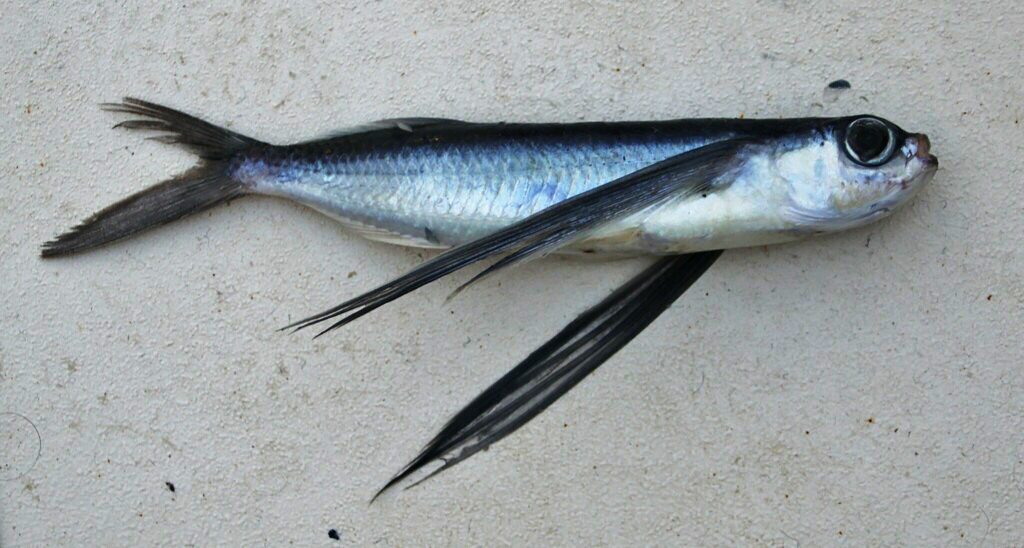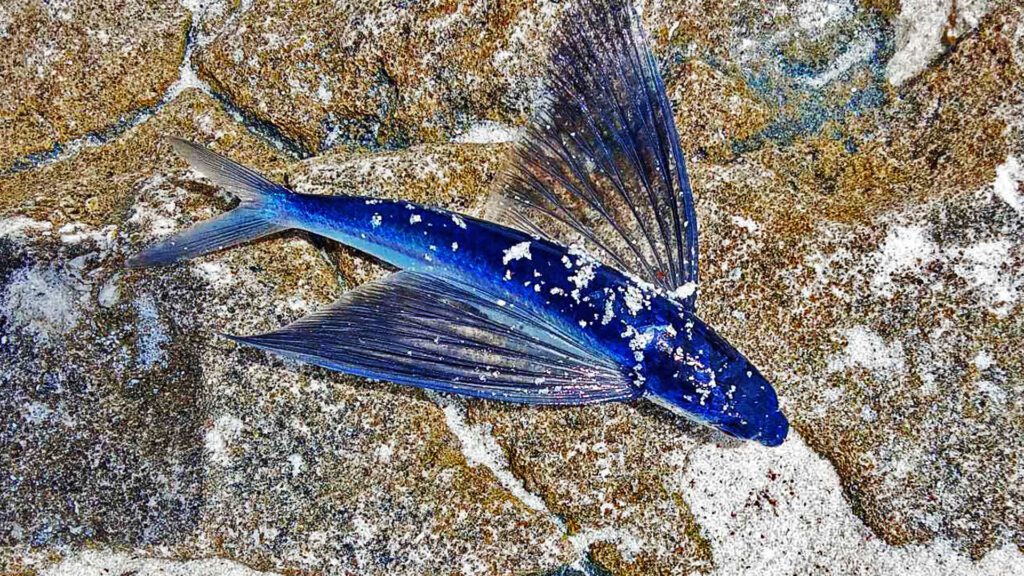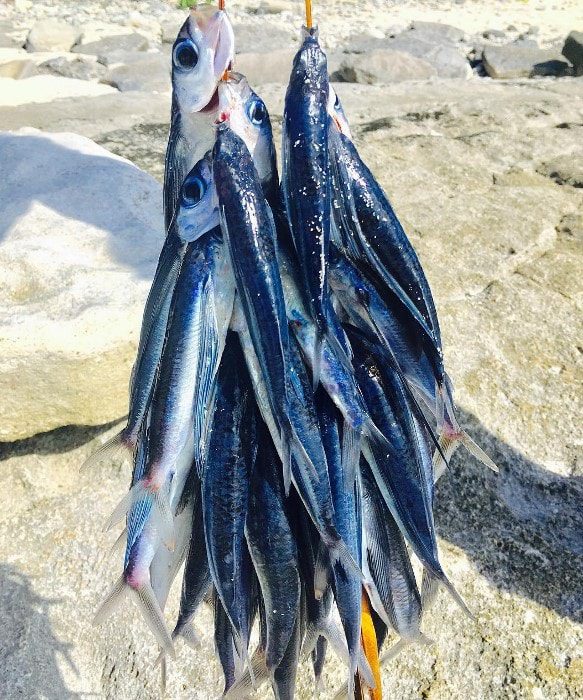
Our island, Fuvahmulah, is known for its flying fish. We’re usually awed by the sight of thousands of them exiting the ocean and flying towards our island. When we were kids, during the southwest monsoon, we would hurry to the beach with wheelbarrows and sacks to collect and fill these containers with flying fish. We can see them leaping out of the water at the reef front and beyond, heading for the land.
In my quest to identify the precise species that glides in large numbers toward the islands, I discovered the tropical two-wing flying fish, or Exocoetus volitans, as it is scientifically known. They can grow up to 18 cm long. It has an elongated body. It is also flattened on the ventral side. The top of this fish’s body is dark and brilliant blue, and the bottom is silvery white. The dorsal and tail fins are gray, and the other fins are not colored. The mouth is tiny. One can see that the snout is shorter than the eye. They usually live in open water. They mostly consume planktonic creatures for food. Its belly is silvery white.
The females of this species release their eggs and sperm into the open water at the same time. This is called “broadcast spawning.” This method makes it more likely that eggs will become fertilized and less likely that egg predators will eat fertilized eggs. We catch thousands of this species of flying fish every year, and it’s by far the most prevalent.
The tropical two-wing flying fish is a popular bait fish among our fishermen on Fuvahmulah Island. This species has been used for generations to catch wahoo, yellowfin tuna, giant trevally, sailfish, and other species. During the flying fish season, fishermen used fresh flying fish to catch the desired predator. They sometimes preserve it in salt. When it wasn’t flying fish season, they caught this species with meat from coconuts.

